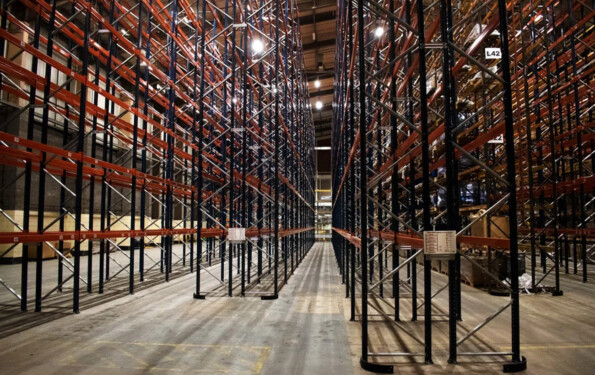How to Calculate Warehouse Storage Costs
Being able to calculate and report your warehouse storage costs is key to financial, logistical and inventory planning. Warehouse owners need to be aware of the costs associated with running a storage facility to ensure their warehouse runs as efficiently as possible.
There are many factors that can influence the calculation of warehouse storage costs and it can be challenging to determine what outgoings you have. We’ve created this guide to help calculate your warehouse storage costs so that you can keep on top of your finances.
Warehouse storage cost calculator
The quickest way of calculating your warehouse storage costs is by following the steps outlined below along with the examples provided.
If you want to take other internal and external factors into consideration, you can find these later on in the guide.
1. Calculate the size of your warehouse
The first step is to work out how big your warehouse is. As you’re calculating costs for the warehouse as a whole, you need to measure the entirety of your storage facility into its square foot.
- Example: 500ft (L) x 200ft (W) = 100,000ft²
2. Review your financial statement
Financial statements are required by law to be published in Companies House. These statements will account for all the costs associated with running your warehouse for the year. Costs can include; rent, utilities, security, miscellaneous services, staff salaries, taxes etc. This collation of costs can also be referred to as operating costs.
- Example: £2,000,000
3. Find the cost per square foot
Finding the cost of each square foot in your warehouse will determine how much you are spending in order to store inventory. You’ll need to divide the total operating costs (step 2) by the square footage of your warehouse (step 1).
- Example: £2,000,000 / 100,000ft² = £20 per square foot
4. Find the cost per unit
This is the number that warehouse owners and operators are generally focused on. Knowing the cost per unit (CPU) gives them a guide on what margins to expect each month, quarter or year. To calculate the average CPU, you need to divide the operating costs (step 2) by how many units you handled for the year.
- Example: £2,000,000 / 1,600,000 units = £1.25 per unit
Other factors to consider
If you want to find the costs for usable storage space, you’ll need to calculate the storage capacity of your warehouse in step 1, rather than the total size of your warehouse – substitute these numbers for the rest of the calculation.
Location
Having a warehouse in a prime location will cost naturally cost more than those that are not. These costs can be an increase in rent, salaries, access to the warehouse etc.
Storage systems
If you’re looking to increase the amount of storage space in your warehouse then this will be added to your operating costs. Investing in storage systems will increase your average CPU in the short term, but will make a huge difference further down the line.
Inventory
If you have ‘dead’ inventory (products that have remained in your warehouse for a significant amount of time), this will increase your CPU. Rotating stock and making sure everything is moved on, will help reduce your warehouse storage costs.
To find out ways on how you can reduce your warehouse storage costs, Oakway Storage has a number of solutions that help businesses like yours. Get in touch with one of our experts to discuss the options on how we can help you, by filling out the form below.
 The Foundation of Success: Why Growing Businesses Need a Healthy Warehouse
The Foundation of Success: Why Growing Businesses Need a Healthy Warehouse  Oakway Storage introduces a new flexible warehouse protection solution to the UK
Oakway Storage introduces a new flexible warehouse protection solution to the UK  Gain a competitive edge with a consult, design and install solution from Oakway Storage
Gain a competitive edge with a consult, design and install solution from Oakway Storage  Maximising your warehouse space: How pallet racking, mezzanines and conveyors can reduce your reliance on third-party storage
Maximising your warehouse space: How pallet racking, mezzanines and conveyors can reduce your reliance on third-party storage  The difference between U, L and I shaped pallet racking layouts
The difference between U, L and I shaped pallet racking layouts 


